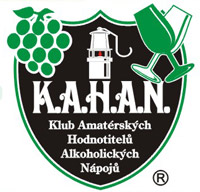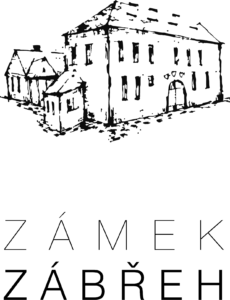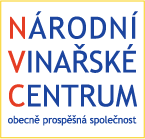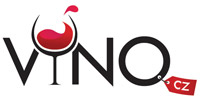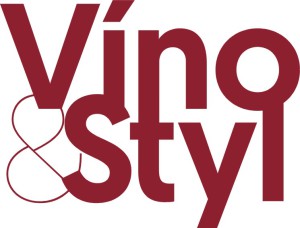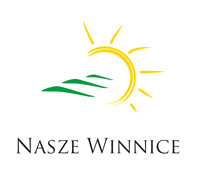Cuvée 2024 Ostrava
The International Wine Competition of the Moravian-Silesian Region
Download:
Results (PDF)
Press Release (PDF)
The 22nd edition of this unique international competition of blends and branded wines was held by the Club of Ostrava’s Amateur Wine Evaluators, K.A.H.A.N, in conjunction with the Castle Zábřeh Hotel in Ostrava and the National Wine Centre. The event took place with the support of the Wine Fund of the Czech Republic. The initiator and spiritual father of this – the only wine contest taking place in the Moravian-Silesian district – was the guru of Czech and Moravian vini-viticulture, the late Professor Vilém Kraus.
Czech and Moravian wine producers and foreign-wine importers entered into this year’s edition a total of 108 wines in six competition categories: 23 dry white wines (category A1), 26 semi-dry and semi-sweet white wines (A2), 36 red wines (B), 11 rosé wines (C), 10 sparkling wines (D) and 2 sweet and liqueur wines (E). A total of seven countries sent their samples to this competition: Czech Republic (88 wines), Slovakia (7), Spain (5), Austria (3), France (3), Portugal (2) and Bulgaria (1), Wines which fulfilled the conditions of the competition statutes were assessed in the tasting room of National Wine Centre in Valtice on 8th April using the 100-point evaluation system under the patronage of the National Wine Centre. A hundred-point system was used in accordance with the criteria as defined by the National Standards for Certifying wine competitions of the Czech Republic. Wines receiving 90 points or over were in receipt of a double gold medal, wines achieving between 87 and 89.99 points were awarded a gold medal, wines achieving between 84 and 86.99 points were awarded a silver medal. It was decided by the organizers not to award any bronze medals.
A trio of specialised committees under the direction of Fedor Malík, Josef Balík and Jiří Dunovský awarded 5 double gold medals, 25 gold and 40 silver medals. Local Moravian wines were honoured with 4 double gold, 17 gold and 32 silver medals. Most successful among the foreign participants were wines emanating from Slovakia (1 double gold, 3 gold, 3 silver), Spain (1 gold, 2 silver), Portugal (2 gold), France (1 gold, 1 silver), followed by Austria (2 silver) and Bulgaria (1 gold).
The title of Champion in the category of dry white wines was awarded to coupage of Grüner Veltliner and Sylvaner EGO No. 76 2022 (Zámecké vinařství Bzenec, Czech Republic). The red-wine champion was assemblage of Syrah and Cabernet Sauvignon Quantum 2021 (Domaine Boyar, Bulgaria; imported by Prowine). The title of National Winner for the best-rated red wine of local provenance went to Merlot Cuvée 2022 (Josef Dufek, Czech Republic) produced from Merlot and Neronet. The winner in the merged category of semi-dry and semi-sweet white wines and the sweet and liqueur wines was cuvée Irsai Oliver / Solaris 2023 (Štěpán Maňák, Czech Republic). The victor in the Rosé and/or Blanc de Noirs category was Cuvée Martínka 2023 (Moravčíkova vína, Czech Republic) made from André, Cabernet Moravia, Zweigelt and St. Laurent. Sparkling-wine category was dominated by Cava Josep Ventosa Brut (Josep Ventosa, Spain; imported by Winaři store), coupage of Macabeo, Xarello, Parellada and Chardonnay. The domestic company Winaři store has received an award for the Best Overall Collection of Wines.
Champion titles were also handed out in the frame of Cuvée Ostrava Wine Exhibition at Castle Zábřeh Hotel on 30th April by the Committee of the Lay Public. These results permit wine producers and importers to compare the opinions of the specialists with those of wine aficionados. With the Jaroslav Kozel Award, in the shape of an original work by glassmaker Ricardo Hoineff, the organisers are paying tribute to the late wine lover from South Moravia without whom the Cuvée Ostrava Wine Competition would never even have seen the light of day. The Champions as chosen by the lay public were Family Collection Thomas 2022 (Víno Hruška, Czech Republic) made of Riesling and Hibernal, as well as Spanish blend of Tempranillo and Graciano Rioja Viña Marro Crianza 2020 (Domeco de Jarauta, Spain; imported by Winaři store). National winner in the red wines category was Alibernet / Merlot NV (Vinařství Baloun, Czech Republic). The winners in the individual categories were Rosé d´Anjou 2022 (Domaine de la Haute Coudraie, France; imported by Winaři store), coupage of Grolleau gris, Grolleau noir and Cabernet franc, and in accordance with specialised jury Cava Josep Ventosa Brut (Josep Ventosa, Spain; imported by Winaři store). In view of the huge number of entries with a higher residual sugar content in the submissions by local wine producers, the Ostrava wine aficionados have arrived at the conclusion not to judge the categories of off-dry and semi-sweet wines. The award for the Best Collection of Wines according to the lay public went to the importer Winaři store. Assamblage of Merlot and Cabernet Sauvignon Manuscript Grand Cuvée Baloun 2018 (Vinařství Baloun, Czech Republic) was then honored by the Jaroslav Kozel Award.
The results from this – the one and only international wine competition taking place in Northern Moravia – were made public on the same day at the Cuvée Ostrava Wine Exhibition in Zábřeh Castle. Professor Fedor Malík inaugurated the accompanying programme with his traditional tutored tasting of “Slovak wines at 5 o‘clock“. Thereafter the wine exhibition will be freely accessible to the general public to the plangent sounds of Moravian dulcimer music, while visitors could sample not only the wines from the competition, but also varietal wines from those Moravian winemakers and importers of foreign wines who were present. The accompanying programme culminated with a presentation by Tomáš Dominec titled “Wines of France Vol. 7.”
The presumptuous aim of the organisers of the Cuvée Ostrava competition is to witness a renaissance of the good name of blends or brands and their return to the forefront of the products on offer from Czech and Moravian winemakers, as is customary in other major wine-producing countries. In the words of the spiritual father of the competition Professor Vilém Kraus: “There’s no Cuvée like a Cuvée” meaning that each and every blend is different.

